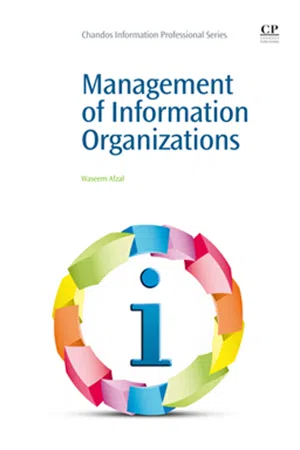Business
Management
Management involves planning, organizing, leading, and controlling resources within an organization to achieve its objectives. It encompasses decision-making, delegation, and overseeing the work of others to ensure efficiency and effectiveness. Effective management is crucial for the success and sustainability of a business.
Written by Perlego with AI-assistance
Related key terms
8 Key excerpts on "Management"
- Franz Schmithüsen, Bastian Kaiser, Albin Schmidhauser, Stephan Mellinghoff, Karoline Perchthaler, Alfred Kammerhofer(Authors)
- 2015(Publication Date)
- Routledge(Publisher)
Business Management deals with multilayered problems within a complex, often unpredictable, environment. It requires a willingness to engage in a continual learning process and take entrepreneurial risks. It presupposes an ability to quickly recognise and evaluate changes both in the company and in its business environment. In this sense, Management is an important prerequisite for deliberate entrepreneurial action. A qualifying and motivating factor in the work of active, self-confident managers is the search for innovation. Management above all means having a talent for leadership and for persuading employees to develop cooperation and implement shared goals making the company successful.Management derives from the Latin expression manum agere , ‘to lead by the hand’; it evolved to maneggiare in Italian and manier in French, with the meaning of guiding or, in a more general sense, handling a particular situation and leading an activity (Kluge 1975; Schneck 2006). Initially used in American English to refer to the work of organisers, agents and coaches working for artists or competitive athletes, it was introduced into other languages mainly in the second-half of the last century. When a new word is adopted from a foreign language, the activities it describes often take on new meaning. Today, Management is more comprehensive and versatile than just leadership and guidance: it gives greater emphasis to active design, prospective activity relative to expected changes and personal responsibility for the consequences.Management is a process of decision making based on systematic information retrieval and analysis of the internal and external factors that determine the situation of an organisation or company (Bea and Haas 2005; Steinmann and Schreyögg 2005). Management activities structure business opportunities, identifying goals and possible solutions. They divide decision-making processes into phases for analysing complex situations and examining alternatives.General Management practices address problems at the level of the company as a whole. However, business Management also addresses the constituent entrepreneurial activities of the company, such as production, marketing, logistics, controlling and human resources. Although modern Management practices have been developed mainly for commercial companies, they are not limited to the private sector. In public institutions and administrative bodies as well, a sound and comprehensive knowledge of Management is an indispensable prerequisite for targeted and efficient action. The use of Management tools has become increasingly common for publicly owned forests. A special case is the Management of large forest estates owned by the state, which present in many ways pure business challenges rather than administrative or policy challenges. To implement this type of Management approach, the public administration system must establish suitable conditions.- eBook - ePub
Sustainable Entrepreneurship
A Guide to Strategic Business Management for for Small Entrepreneurs in the Wine Industry and beyond
- Marc Dreßler(Author)
- 2024(Publication Date)
- UVK Verlag(Publisher)
3Business ManagementBusiness Management entails a panoply of decision-making activities that have a profound effect on a company’s success, or lack thereof. In this section, I will be discussing the outward manifestations of managerial decisions from an institutional and functional perspective with reference to the concept of entrepreneurship . In order for entrepreneurship to successfully achieve sustainability, it needs to take into account the relevant operational and especially organizational variables, and consideration the relevant overlapping elements and delimiting concepts and approaches.3.1Management
Enterprises can be defined as business establishments that purposefully undertake activities in order to produce and market goods and services. In order for these various activities to be coordinated, they need to be orchestrated , and this is what we mean by Management , business Management , leadership or governance – terms I shall use interchangeably in the following.The German economist Erich Gutenberg (1897-1984) used microeconomy to explain the theory of a firm. He defined Management as the dispositive productive activity of subsuming, combining and coordinating the fundamental factors of human labor, resources and materials, with a view to enabling a business to engage in purposeful activities and achieve its desired commercial objectives in an optimal fashion.3.1.1Management from an institutional perspective
Governance in organizations is realized by assigning decision and responsabilities to managerial levels and departments. Hence, from an institutional perspective Management - eBook - ePub
- Waseem Afzal(Author)
- 2012(Publication Date)
- Chandos Publishing(Publisher)
3Management
Abstract:
This chapter describes Management and the Management process. The Management process is explained by highlighting its different elements, to which some additions were added including listening, empowering, and evaluating. Next, the important features of Management are described in the context of information organizations, and finally some thoughts regarding practice of Management in the information age are presented.Key words Management Management process market for information information ageIntroduction to Management
Management is the achievement of organizational objectives and includes all the activities that facilitate this achievement. It entails the mobilization of organizational resources and enhancement of performance. Mary Parker Follett, an early Management scholar, described Management as “the art of getting things done through people” (as cited in Stoner and Wankel, 1986 : 3). This emphasis on people was also reiterated by Drucker and Maciariello (2008 : xxxiv), who defined Management as “to make human resources productive.” Building on these definitions and other descriptions, I would like to define Management as “the mobilization of organizational resources with the purpose of achieving the organizational goals.” This definition includes four elements: (1) mobilization; (2) organizational resources; (3) achievement; and (4) organizational goals. Below is a description of each.Mobilization
Mobilization in the context of Management includes organized efforts to integrate different resources in such a way that goals are achieved with effectiveness and efficiency. Before making any effort to mobilize, it is important to identify all of the resources, the resources needed to attain a particular goal, and the way in which these resources should be integrated. Thus, for example, a manager identifies the material, labor, capital, and human resources of an organization. She uses different strategies to mobilize the flow of each of these resources: for instance, acquisition of material resources may involve better negotiation strategies with the suppliers; labor mobilization may require favorable working conditions and motivation; capital mobilization can involve getting loans at favorable terms; and human resource mobilization can entail making workers more productive and better equipped to perform the designated tasks. - Mathew Donald(Author)
- 2019(Publication Date)
- Emerald Publishing Limited(Publisher)
Management has a wide range of responsibilities that are quite distinct and separate to that of leadership, these include the way work is distributed, monitored and the way that employees interact with the tasks (Donald, 2017). After a review of the literature, Management was defined as a skill of making decisions (Sadler-Smith, 2008), thinking (Khandelwal & Taneja, 2010) and alignment of input and outputs (Donald, 2017). Management task alignment involves efficiency and competitiveness (Singh & Shoura, 2006), people (Seilby, 2014), plans (Ketter, 2014) and control (Griffin & Van Fleet, 2013). Tasks expected to be managed are often not structured nor routine and thus cause difficulties that require resourcefulness to overcome them (Kanungo & Misra, 1992). Owing to the fast turbulent world that face managers today they may need to use intuition when making decisions (Sadler-Smith, 2008), rather than purely facts or data.The concept of Management was derived from a systems perspective to organising activities (Likert, 1967), where the concept envisaged Management as being responsible for the conversion of inputs into business outputs, allocating resources including capital and employees (Bordley & Pollock, 2012). The required skills of a manager are considered wide (Griffin & Van Fleet, 2013) with difficult choices and thus they often allocate resources to issues rather than opportunities (Drucker, 1963, 2006). Others have defined Management with four functions of planning, organising, leading and control (Williams et al., 2016). Many managers do not know how to implement change successfully, despite understanding change importance and the expectation that they lead the change (Rosenberg & Mosca, 2011). New concepts are emerging for Management, including elements of ethics and corporate social responsibility, yet the definitions are still broad and open (Nonet, Kassel, & Meijs, 2016). Specialised roles were created to manage risk, yet they failed to prevent the Global Financial Crisis (GFC) (Dionne, 2013).- eBook - ePub
- Henry Kyambalesa(Author)
- 2019(Publication Date)
- Routledge(Publisher)
1/ THE MANAGEMENT PROCESSVisualisation of a task to be performed is ... fundamental to the successful execution of the task. 2Let us start here by defining the term “Management.” As a process, the term essentially refers to the generation of organisational units and the coordination and integration of the units and available resources to accomplish specified targets and objectives. However, it should be noted that the term is also alternately used to refer to the discipline concerned with understanding and improving the knowledge and skills in managing an organisation, or the group of persons that is charged with the responsibility for managing the affairs and resources of an organisation.Management, as a process, enjoys wide application. In organisational settings, it is employed at literally all levels (that is, top, middle and lower levels of Management), and in various functional units (that is, accounting, finance, marketing, personnel, production, and other units). In society, Management is apparently applied by all kinds of organisations. And across societies, Management occupies a prominent niche regardless of the nature of prevailing socio-economic systems or ideological differences.This chapter is devoted to a survey of the following elements of the Management process: the Management functions, managerial decision-making, human resource Management, and labour-Management relations. An understanding of these elements should, by and large, enable us to visualise the nitty gritty of the managerial job.In the interim, let us remember that managerial competence is not an in-born quality or attribute; rather, it is acquired through learning. However, one cannot learn to become an effective manager entirely from books, lectures, seminars, and workshops; many aspects of managerial competence, as Glueck has maintained,3 - eBook - ePub
Managing Information & Systems
The Business Perspective
- Adrienne Curry, Peter Flett, Ivan Hollingsworth(Authors)
- 2006(Publication Date)
- Routledge(Publisher)
Managers set and monitor organisational objectives by allocating human and material resources and directing operations. They bring together the individuals in an organisation with its goals and needs, establishing individual and collective responsibilities to achieve what is necessary for the business. Managers have a variety of organisational roles and perform a number of functions, but essentially they are all decision-makers.The importance of good Management cannot be over-emphasised; it frequently determines business success or failure. Good Management has two criteria, which must be carefully balanced to ensure optimisation of available resources. Managers have to be efficient, i.e. accomplish tasks in the best possible way, and effective, i.e. make sure the tasks they are performing are the right ones. A manufacturer of furniture could produce much more elaborate and attractive items by disregarding materials and labour costs, but this would be inefficient Management. Similarly, service organisations which spend a great deal of time and money perfecting aspects of their service that are relatively unimportant to their customers are managing in a highly ineffective way. Poor Management is often manifested in both inefficiency and ineffectiveness or ineffectiveness obtained through inefficiency.Figure 3.1 Levels in the organisationOrganisational members can be divided into the two principal categories of operatives and managers. Operatives work directly on tasks with little if any responsibility for overseeing the work of others. Managers, on the other hand, tend to direct the activities of other people and can be considered on three broad levels, outlined in the following list, with operatives making up the fourth level, as shown in Figure 3.1 - eBook - ePub
Effective People Management
Your Guide to Boosting Performance, Managing Conflict and Becoming a Great Leader in Your Start Up
- Pat Wellington(Author)
- 2017(Publication Date)
- Kogan Page(Publisher)
03The Management side of building your business
Introduction
As an entrepreneur you need to be able not only to lead but also to manage. People often confuse Management and leadership. What is the difference between the two?- Leadership is evolutionary (future-oriented).
- Management is operational (present-oriented).
Management activities tend to be task-oriented and include things like day-to-day planning, budgeting, problem solving, administration and control. Leadership activities such as those above are less easily defined but can have more far-reaching future consequences. Do not think of leadership as more desirable than Management. Rather, you should understand the differences and be capable of using both skill sets according to the situation.Management is not just a set of behaviours that you apply the same way everywhere. Rather, it is the ability to assess an environment – and its people – and choose the right skills and applications for the specific situation. According to a Harvard study, 85 per cent of managers get ahead based on their ability to deal with people, while only 15 per cent do so based on technical competence, and the former is the focus of this chapter. Management is about getting results. Getting results means delivering your objectives, which should mean adding value and profitability to your organization.Your Management role and responsibilities
As you build your business, you will need to employ others. Let’s look at a couple of different options and how your Management role will differ in each of these situations. One approach as we have mentioned in the previous chapter could be to bring in specialist/ senior managers who in turn will recruit others and become a self-directed team. This means that they would have their own budget, create their own product range or service offering, and be accountable for their teams output.Option two would be for the entrepreneur to recruit a task-oriented operational team. Let’s start by looking at the first option. - eBook - ePub
Work, Change and Competition
Managing for Bass
- David Preece, Gordon Steven, Valerie Steven(Authors)
- 2002(Publication Date)
- Routledge(Publisher)
Management is a social process, involving negotiation and construction of meaning to get things done. It is, although a central part of formal organizations, also a part of organizing any sort of activity…so most people have experience and insight into some part of the Management process even if it is incomplete. Even ‘managers’ may not have a complete view, as hierarchies limit discretion, authority, and exposure…This implies the need to study Management closely in the field with sensitivity to both actions performed and the intersubjective meanings given by the actors to those actions. (1996:15)Linstead goes on to explain in more detail what he intends by a conception of Management as a process:Whilst fully concurring with this way of conceptualizing managerial activity, it is perhaps useful to draw out two particular points from Linstead’s comment. First, ‘managing’ as a process or activity is neither by definition nor in terms of practice confined to those people who are called ‘managers’ in organizations. This usage of the word carries the meaning of ‘bringing things together’ or ‘organizing activities’, which, clearly, any and all employees do at various times during their work. The word ‘managers’, then, refers to certain people or occupations within an organization who have specific responsibilities for ‘managing’ activities, which are likely to include organizing or ‘managing’ the work of other people: nonmanagers, or less senior managers. Second, it seems to us to be unlikely that anyone, whether a manager (senior or otherwise) or not, could ever ‘have a complete view’ of the managerial process, for everyone is circumscribed in terms of the organizational members they meet or correspond with, and the extent to which they get to know these people and their concerns and ‘agendas’ (we can think of people we have worked with in the same department for years, and yet we would never delude ourselves that we fully understand them in these terms).…Management involves thought and emotion. It involves substantive and symbolic activity which overlap, expressed through symbols and rhetoric often with layers of meaning accessible only to ‘insiders’. It involves overt and covert power struggles and political infighting. Management is also involved in the production and consumption of both goods and identities, or subjectivities. and as such takes the form of what Foucault calls a ‘discourse’…All of these characteristics argue that ambiguities, symbolic dimensions, covert informal practices, real conditions rather than ideal conditions, and informal arrangements and networks rather than formal rules and organizational charts, need to be studied by an approach which immerses itself closely in the detail of managerial life. (1996:16)
Index pages curate the most relevant extracts from our library of academic textbooks. They’ve been created using an in-house natural language model (NLM), each adding context and meaning to key research topics.







